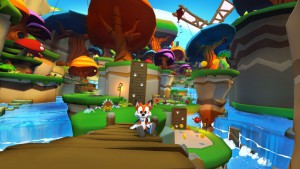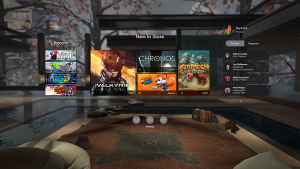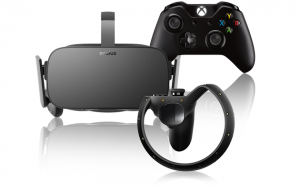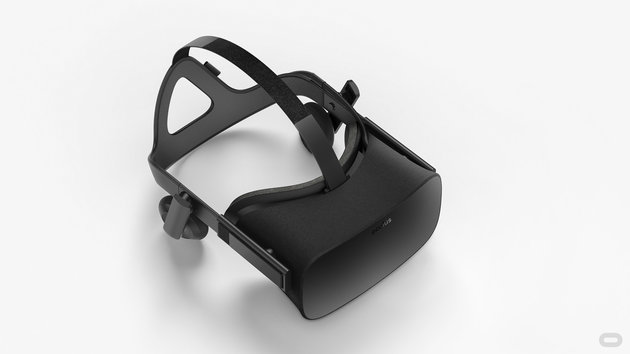The Oculus Rift has been commercially available for one month today. After a successful Kickstarter campaign in 2012, the virtual reality (VR) community has waited four long years for the arrival of the head-mounted display (HMD). The ride has been somewhat of a rollercoaster thus far, not least concerning the shipment delays recently, but in that of the HMD itself also. VRFocus has looked into how it performs under extended testing: hardware, software and everything between.
Hardware
The HMD is a robust piece of kit. Having withstood extensive use from multiple participants throughout VRFocus’ exhaustive review and preview agenda, the device does not appear any worse for wear. The foam faceplate shows no signs of wear-and-tear while only minor scuffs are evident on the head brace. The fabric on the front of the HMD has some issues with trapped skin – not dust as such, but clear evidence of use in between in weave of the fabric – though has not suffered from tears or any other obvious signs of damage.
One month on and the Oculus Rift shows obvious signs of use, but no unexpected damage. VRFocus has used the device extensively, so clearly it’s holding up well.

Software
The initial software line-up for the Oculus Rift was plentiful, and including some wonderful first-time experiences. A mix of entry-level VR and more detailed, lengthy videogame titles, Oculus VR had done well to ensure that the platform had all its bases covered. Since launch however, it has been a different story.
The numerous independent developers that had promised an Oculus Rift experience in time for launch seem to be underrepresented. The four weeks that have followed have only seen IRIS VR’s TECHNOLUST representing the indie scene, while The Climb and FATED: The Silent Oath are the only two notable additions from AAA studios. Exactly what the future of the Oculus Rift’s software line-up looks like is unknown at present, though concerted effort must be made to ensure a constant stream of high-value experiences is secured.

Oculus Home
Since launch the Oculus Home software has remained in ‘beta’. There has been no new additions, including no new backdrops for the virtual home presented alongside the Store and Library of software. Worse still, the Friends List is essentially redundant, simply allowing a user to acknowledge when their friends are online. There is no party system, no direct matchmaking, no profile, Achievements integration and no direct sharing of information.
This pales in comparison to the experience offered on consoles and several PC desktop marketplaces, including Steam. While such platforms have had years to develop their offerings, Oculus VR entered the market with full knowledge of what had existed before. Oculus Home is an intriguing prospect when first experiencing the Oculus Rift, but since launch has done little to convince that it will earn a place of pride amongst the Xbox Live’s and PlayStation Network’s of the gaming world.

Controller Support
The Xbox One controller is the standardised input for the Oculus Rift, though Oculus VR seem to be taking a relaxed approach to this. Shufflepuck Cantina Deluxe now allows mouse control and Elite Dangerous brings its support of HOTAs and other flight sticks without hesitation. Seemingly more of a rule-of-thumb for developers opposed to a law, the floodgates are now open for developers to push beyond a control pad should they so wish. Of course, Oculus Touch is still the elephant in the room here.















